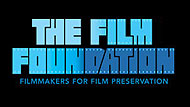

“What have you done? Thousands of years of building and rebuilding, creating and recreating so you can let it crumble to dust. A million years of sensitive men dying for their dreams… For what? So you can swim and dance and play,” says H. George Wells.
I first read H.G. Wells’ 1895 novel The Time Machine when I was in elementary school. Since time travel stories are among my favorite kind of science fiction stories, I was instantly hooked by Wells’ novel. I was most fascinated about a  time traveler from Victorian England who went forward in time rather than the traveling back that is most commonly found in time travel stories. I was also fascinated by the world of the future the time traveler encounters, especially the distinction between the Eloi (who live on the surface) and the Morlocks (who live below). The novel has been adapted for the big screen twice; by George Pal in
time traveler from Victorian England who went forward in time rather than the traveling back that is most commonly found in time travel stories. I was also fascinated by the world of the future the time traveler encounters, especially the distinction between the Eloi (who live on the surface) and the Morlocks (who live below). The novel has been adapted for the big screen twice; by George Pal in  1960 and by Simon Wells (the author’s great grandson) in 2002. I had a chance to see Pal’s version of The Time Machine at Symphony Space in the Upper West Side of New York City almost 13 years ago during their sci-fi film retrospective (it was part of a double feature with the 1953 version of The War of the Worlds, which had also been produced by Pal). This review of The Time Machine is my entry in the Movie Scientist Blogathon hosted by Christina Wehner & Silver Screenings.
1960 and by Simon Wells (the author’s great grandson) in 2002. I had a chance to see Pal’s version of The Time Machine at Symphony Space in the Upper West Side of New York City almost 13 years ago during their sci-fi film retrospective (it was part of a double feature with the 1953 version of The War of the Worlds, which had also been produced by Pal). This review of The Time Machine is my entry in the Movie Scientist Blogathon hosted by Christina Wehner & Silver Screenings.
1960’s The Time Machine follows an inventor who constructs a time machine and ends up traveling 800,000 years into the future only to discover that humanity has split into two groups, the surface-living Eloi and the Morlocks,  who dwell below the surface. As he struggles to make sense of the future, he must also figure out a way to recover his machine from the Morlocks. Pal gathered together a terrific cast that includes Rod Taylor (as H. George Wells), Alan Young (as David Filby and James Filby), Yvette Mimieux (as Weena), Sebastian Cabot (as Philip Hillyer), Tom Helmore (as Anthony Bridewell), Whit Bissell (as Walter Kemp), Doris Lloyd (as Mrs. Watchett), and Paul Frees (as the voice of the Talking Rings). Taylor turns in a strong performance as the time-traveling George, bringing conviction and hope for
who dwell below the surface. As he struggles to make sense of the future, he must also figure out a way to recover his machine from the Morlocks. Pal gathered together a terrific cast that includes Rod Taylor (as H. George Wells), Alan Young (as David Filby and James Filby), Yvette Mimieux (as Weena), Sebastian Cabot (as Philip Hillyer), Tom Helmore (as Anthony Bridewell), Whit Bissell (as Walter Kemp), Doris Lloyd (as Mrs. Watchett), and Paul Frees (as the voice of the Talking Rings). Taylor turns in a strong performance as the time-traveling George, bringing conviction and hope for  humanity, and Mimieux shines in one of her earliest roles as the child-like Weena, highlighting her innocence. Pal’s strong direction draws excellent performances and stages some exciting action sequences (the time travel sequences are a marvel as well). The screenplay by David Duncan adapts a lot of Wells’ novel (with some slight alterations and/or deletions), examining a future dystopia that was caused by nuclear war while maintaining the sprit of Wells’ novel.
humanity, and Mimieux shines in one of her earliest roles as the child-like Weena, highlighting her innocence. Pal’s strong direction draws excellent performances and stages some exciting action sequences (the time travel sequences are a marvel as well). The screenplay by David Duncan adapts a lot of Wells’ novel (with some slight alterations and/or deletions), examining a future dystopia that was caused by nuclear war while maintaining the sprit of Wells’ novel.
Paul Vogel’s cinematography supports the tone of the film (I loved the lighting scheme for the underground sequences with the Morlocks). The fantastic production design by George Davis and  William Ferrari recreates Victorian England as well as the world of the future from Wells’ novel such as the dome structures, air shafts leading to the underground lair of the Morlocks, etc. (Ferrari was also responsible for the now-classic design of the time machine itself). William Tuttle’s makeup design is amazing (particularly his work on creating the Morlocks). The Oscar-winning special effects by Gene Warren and Wah Chang are incredible (the outstanding time-
William Ferrari recreates Victorian England as well as the world of the future from Wells’ novel such as the dome structures, air shafts leading to the underground lair of the Morlocks, etc. (Ferrari was also responsible for the now-classic design of the time machine itself). William Tuttle’s makeup design is amazing (particularly his work on creating the Morlocks). The Oscar-winning special effects by Gene Warren and Wah Chang are incredible (the outstanding time- lapse photographic effects are what clinched the Academy Award; while Warren wound up as a recipient of the Oscar, Tim Baar somehow ended up being a recipient as well instead of Chang). George Tomasini’s editing moves the film at a good pace, and Russell Garcia delivers a wonderful, adventurous score. George Pal’s The Time Machine is an entertaining adaptation of H.G. Wells’ classic novel, filled with Oscar-winning special effects and a rousing adventure that spans centuries.
lapse photographic effects are what clinched the Academy Award; while Warren wound up as a recipient of the Oscar, Tim Baar somehow ended up being a recipient as well instead of Chang). George Tomasini’s editing moves the film at a good pace, and Russell Garcia delivers a wonderful, adventurous score. George Pal’s The Time Machine is an entertaining adaptation of H.G. Wells’ classic novel, filled with Oscar-winning special effects and a rousing adventure that spans centuries.






I was there when the special effects were done on the The Time Machine. I would like to correct a couple of things that have been made regarding the production of them. One being that the special effects were done by Gene Warren and Tim Barr. The effects credits should surely Wah Chang who was the main creator of them. Tim Barr managed the few 24 fps effects that were done and Wah Chang and Gene Warren were the creators of the direction of the stop motion effects that were by far the majority that were done on this film. I also would like to say that Paul Vogel had nothing to do with the filming of the in studio special effects on the film, including the rotating gels that we used at the studio that did these same effects. I still remember gluing the gels on the delicate wood frames that I made and them popping with a loud bang when the heat from the lights shrunk the gel material. Working on the special effects and working for the extraordinary Gene Warren and Wah Chang was a life changing experience for me, in the unfolding of my creativity as a young and malleable person. Those were good times which are still with me at their company, aptly named Project Unlimited.
Thanks for your caring,
David Pal
Thanks for the corrections. I’m surprised that Wah Chang wasn’t a recipient of the Best Visual Effects Oscar given his contributions. Thanks again for sharing!
Yes. I have seen a lot of injustices in my time in the Hollywood studio system, but that is certainly the worst one. The omission of Wah from the Academy Award still pains me when I think of it. It was portrayed as a clerical error. I wonder. I remained friends with Wah until his death and we sometimes would get together. Wah never spoke of it. I regarded that as a testament of his greatness. One of the reasons that I didn’t find very hard to leave “the business”.
Regards,
David
It certainly was a great injustice. Thanks again for sharing, David. Would you be interested in sharing more on the films you worked on for a potential separate post on my blog?
I am not sure what separate post on a blog specifically entails. Could you fill me in a bit?
You can contact me at my Email address.
Regards,
David (Pal)
It certainly was a great injustice. Thanks again for sharing, David. Would you be interested in sharing more on the films you worked on for a potential separate post on my blog?
Thanks for your contributions here. Because I was very involved in the production of the special effects in The Time Machine I would like to make a few corrections here about the history
I’m not a sci-fi person but I really liked this film. Rod Taylor is great! My biggest excitement though was discovering that Alan Young is the voice of Disney’s Scrooge in “Mickey’s Christmas Carol” haha. I was watching it and thought “I know that voice!”
I had almost forgotten that Alan Young was Wilbur from Mister Ed and the voice of Scrooge McDuck. He had also previously worked with George Pal in Pal’s 1958 adaptation of Tom Thumb. Thanks for stopping by!
Pingback: #MovieScientist Blogathon Day 3 Recap – The Lonely – Silver Screenings
Sounds like a great adaptation of the book! I read The Time Machine this winter, but have not seen this film. I am putting it on my “must see” list, though!
You’re right, it is rather rare to travel in time to the future. I never thought of that.
Thanks so much for participating and for introducing me to this film!
You’re welcome. Check out the 2002 version as well. It’s quite underrated.
Still enjoy watching this classic. Rod Taylor just wonderful in it.
He sure is.
There is so much to admire about this film – the performances, the sets & costumes and the special effects, as you pointed out. It’s endlessly fascinating; it never gets old, does it? It’s one of the best examples of science fiction (in my opinion) because it says something about who we are as humans, and what we could be come – whether good or bad.
Thanks so much for joining the blogathon! It wouldn’t have been a party without Rod Taylor.
I was glad to be a part of it. The Time Machine truly is timeless.